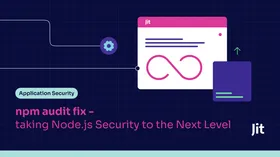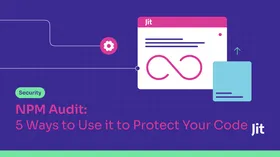TruffleHog vs. Gitleaks: A Detailed Comparison of Secret Scanning Tools
Updated June 18, 2024.

TruffleHog and Gitleaks are popular secrets scanning tools that can automatically surface hardcoded secrets such as API keys, passwords, and tokens. They can both be integrated into the Software Development Lifecycle (SDLC) to proactively scan repositories to identify and rectify potential issues before they can be exploited.
The need for effective secret detection tools underscores a broader shift toward more secure software development practices. Secrets embedded within codebases, if leaked, can provide attackers with unauthorized access to databases, APIs, and external systems, potentially leading to significant security breaches.
In this article, we'll explore the functionality, strengths, and weaknesses of two leading secret detection tools - TruffleHog and Gitleaks.
What Are Secrets?
Secrets refer to sensitive data that, if exposed, could significantly compromise the security of applications and systems. This category of sensitive data includes authentication tokens, passwords, API keys, and encryption keys, as well as any information that grants access or control over resources.
Let's consider an example of a secret, involving a GitHub token. With a GitHub token, you can manage repositories, create new ones, delete existing ones, and create and approve pull requests. If this token falls into the hands of someone who isn't authorized to have it, it can be easily misused.
Unauthorized access enabled by such a token can lead to significant alterations to or loss of critical data, potentially compromising the security and integrity of entire projects.
Understanding Secret Detection Tools
In simple terms, secret detection tools are specifically engineered to identify and prevent the accidental exposure of sensitive information that could potentially grant unauthorized access to databases, external services, and other critical resources.
These tools play an essential role in a security strategy by ensuring that sensitive credentials, such as API keys, passwords, and certificates, are not inadvertently published in version control systems where malicious actors can access them.
As previously mentioned, the consequences of such exposures can be dire, leading not only to data breaches and significant financial losses but also to long-lasting damage to customer trust and severe repercussions for company privacy policies and compliance with data protection regulations.
Use Cases of Secret Scanning Tools
Developers use secret detection tools in various scenarios, though they're primarily used to harden application security during the software development process.
For instance, in a collaborative development environment, a developer might accidentally include a database credential in their source code which they use to access development servers. If this code is then pushed to a public or even a private but accessible repository, it could expose not only the development database but potentially production databases as well, if proper environment segregation isn't maintained.
Of course, tools like TruffleHog or Gitleaks can be configured to scan repositories before code is merged, ensuring that any such credentials are caught early and removed, thereby safeguarding the infrastructure from unauthorized access.
Diving into TruffleHog
TruffleHog is a powerful secret detection tool renowned for its deep scanning capabilities that extend beyond just simple code repositories. It is engineered to scan various environments that are more than just code, such as S3 buckets, Docker images, and even private cloud storage, which makes it exceptionally versatile for security audits across multiple platforms.
Moreover, TruffleHog employs complex patterns and entropy analysis to detect hard-coded secrets like API keys, cryptographic keys, and passwords that might be inadvertently exposed.
Pros
- Extensive Scanning Capabilities: TruffleHog's ability to scan diverse environments, not limited to source code, makes it invaluable for comprehensive security assessments across an entire digital ecosystem.
- Advanced Secret Exposure Verification: TruffleHog can differentiate between secrets being deployed into a production environment vs secrets being deployed to a mundane staging environment, which can help significantly reduce false positives and focus on genuine security threats.
- Customizable Rule Sets: Thanks to its build, users can define custom rules tailored to their specific security needs, enhancing TruffleHog’s effectiveness in identifying unique or non-standard secret patterns.
- Integration Flexibility: As a secret scanner, TruffleHog integrates well with various CI/CD pipelines, providing seamless automation and continuous security during the development process.
Cons
- Complex Configuration: The setup and configuration of TruffleHog can be complex, requiring more technical expertise, which may pose a challenge for teams without dedicated security personnel.
- Resource Intensity: Due to its thorough scanning capabilities, TruffleHog can be quite resource-intensive, potentially leading to longer scan times and much higher computational overhead.
Exploring Gitleaks
Gitleaks is favored for its straightforward approach and ease of use, making it a preferred choice for many developers, especially those new to secret detection. It operates by scanning repositories for secrets against a wide range of known patterns and using entropy checks to identify potential secrets in unexpected places.
Unlike TruffleHog, Gitleaks focuses on being lightweight and fast, allowing it to integrate smoothly into any development workflow, as well as provide rapid feedback without significantly impacting development speed.
Pros
- Ease of Use: Gitleaks is designed to be simple to configure and deploy, which lowers the entry barrier for teams looking to incorporate secret detection into their projects.
Broad Pattern Detection: As a secret scanner, Gitleaks uses a comprehensive database of patterns to scan for a wide array of secrets, ensuring that many common vulnerabilities are caught.
High-Speed Scanning: Thanks to its design, Gitleaks is optimized for speed, allowing it to perform scans quickly and efficiently, which is ideal for high-velocity development environments.
- Effective in CI Environments: The lightweight nature of Gitleaks makes it a particularly effective tool for integration into Continuous Integration (CI) environments, where quick scans are essential.
Cons
- Limited to Code Scanning: Unlike TruffleHog, Gitleaks does not scan non-code components like Docker images or cloud storage, which can be a limitation in more complex environments.
- Potential for False Positives: The reliance on entropy to detect secrets can sometimes lead to false positives, identifying complex strings that are not actually secrets.
Side-by-Side Tool Comparison: Gitleaks vs TruffleHog
When choosing between TruffleHog and Gitleaks, understanding the contexts and environments in which each tool excels could help you make a better decision. Now, let's explore the scenarios best suited for each tool and the key considerations to keep in mind before choosing.
Which Tool Fits Which Scenario Better?
TruffleHog is best utilized in complex, multi-environment scenarios where comprehensive scanning beyond the source code is necessary. Its capability to scan S3 buckets, Docker images, and other non-code assets makes it highly effective for large enterprises or projects where security needs extend into various digital assets. This makes TruffleHog ideal for organizations with a diverse IT infrastructure that requires deep and thorough scanning to ensure no secrets are leaked.
Gitleaks, on the other hand, shines in simpler, more straightforward coding projects where ease of use and quick setup are prioritized. Its design caters to developers who need fast, effective secret detection within their codebases without the complexity of configuring additional scanning parameters for other types of digital environments. Gitleaks is particularly suitable for smaller teams or projects with a primary focus on rapid development cycles and where the majority of sensitive information is contained within the repository code.
Considerations for Choosing Between TruffleHog and Gitleaks
Project Complexity and Environment
Consider whether your project involves multiple types of environments that require scanning or if it is strictly limited to code repositories. TruffleHog’s broad scanning capabilities make it a better fit for complex environments, while Gitleaks is optimal for straightforward code scanning.
Ease of Use and Setup
Evaluate the skill level of your team and the resources available for tool configuration. If your team prefers a tool that is easy to set up and integrate into your CI/CD pipeline without much hassle, Gitleaks may be the better choice. If your team can handle a more complex setup for the benefit of deeper security insights, opt for TruffleHog.
Scanning Accuracy and False Positives
Consider how each tool handles false positives and the accuracy of their scanning capabilities. TruffleHog’s verification feature reduces false positives by distinguishing between real secrets in production vs those that don’t pose real security risk, which can be crucial for maintaining productivity.
Gitleaks, while fast and effective, may require additional filtering of results to manage false positives, especially when using entropy-based detection.
How We Do it at Jit
At Jit, we streamline the integration of tools like TruffleHog and Gitleaks into your CI by handling everything ourselves. Once you install Jit into your GitHub organization, activating the secret detection feature is all that's required. We take care of blocking PRs, upgrading the open source tools, and configuring settings, so there's no need for you to manage this - simply activate secret detection and let it run in the background.
If a developer tries to merge a pull request containing a secret, Jit automatically blocks it until the secret is removed, ensuring compliance before approval. We also manage tool updates for you, seamlessly integrating new versions as they are released to maintain the latest security standards without any effort on your part.
Moreover, Jit's security solutions go beyond just secret scanning. We provide a unified platform that integrates a full suite of security tools - including Static Application Security Testing (SAST), Infrastructure as Code (IaC) scanning, code scanning, and Software Composition Analysis (SCA), Dynamic Application Security Testing (DAST) - all into one streamlined solution.
Summary
All in all, choosing the right secret detection tool requires a careful assessment of your project's needs, the complexity of the environments you operate in, and the capacity of your development team. TruffleHog offers extensive scanning capabilities ideal for complex infrastructures needing comprehensive coverage, while Gitleaks provides a more streamlined, user-friendly approach suitable for simpler codebase projects.
Fortunately, with Jit, you can streamline this decision-making process, as Jit offers a unified solution that adapts to the needs of any project. This allows your organization to leverage the strengths of these tools without the hassle of manual integration, ensuring that your security priorities are met efficiently and effectively.





